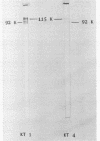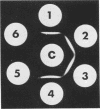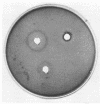Abstract
Monoclonal antibodies were obtained after fusion of mouse myeloma cells with spleen cells isolated from mice primed with a crude extract of yeast killer toxin produced by a strain of Hansenula anomala. Hybridomas were selected by specific immunoassay reaction of their fluid with crude yeast killer toxin extract. Among the monoclonal antibodies, which were characterized by the Western blot technique, one (designated KT4) proved to have precipitating properties, thus permitting the neutralization of the killer activity of the toxin. Experiments in double immunodiffusion showed that monoclonal antibody KT4 produced homologous precipitin bands by reacting with either the crude toxin used as immunogen or a toxic extract of Hansenula mrakii. It is suggested that these monoclonal antibodies will be useful for the purification, characterization, and understanding of the bioactions of yeast killer toxins.
Full text
PDF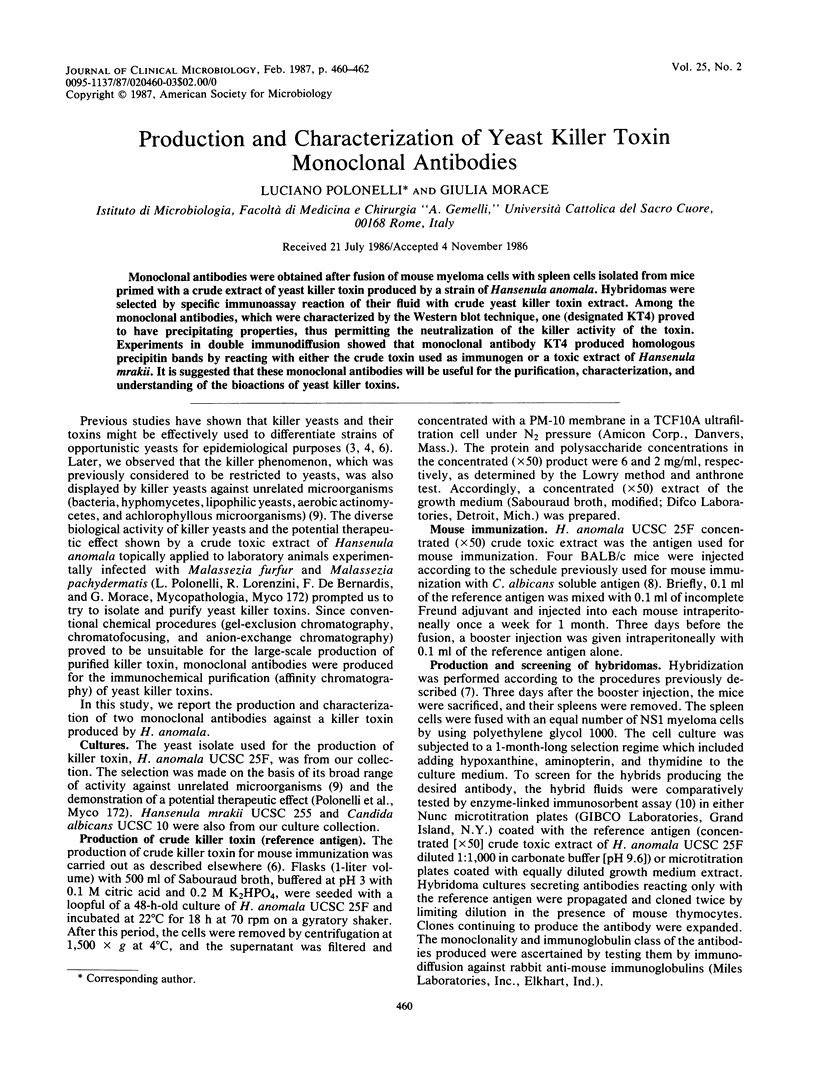
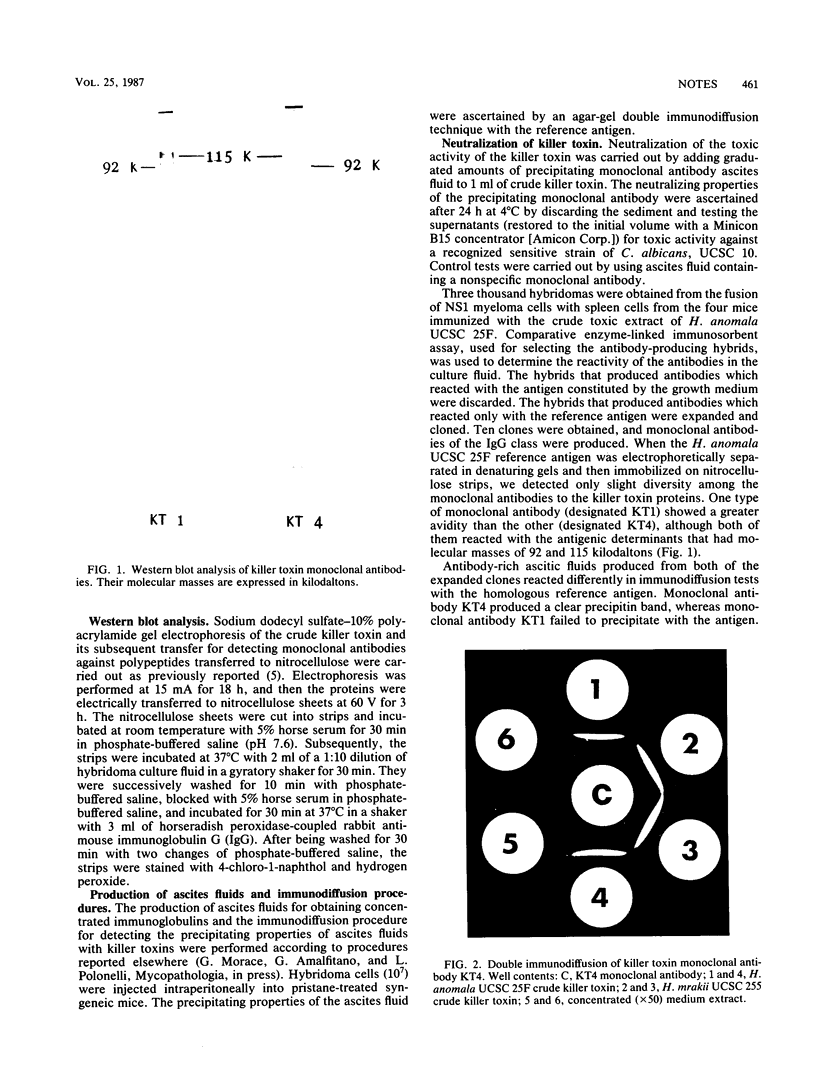
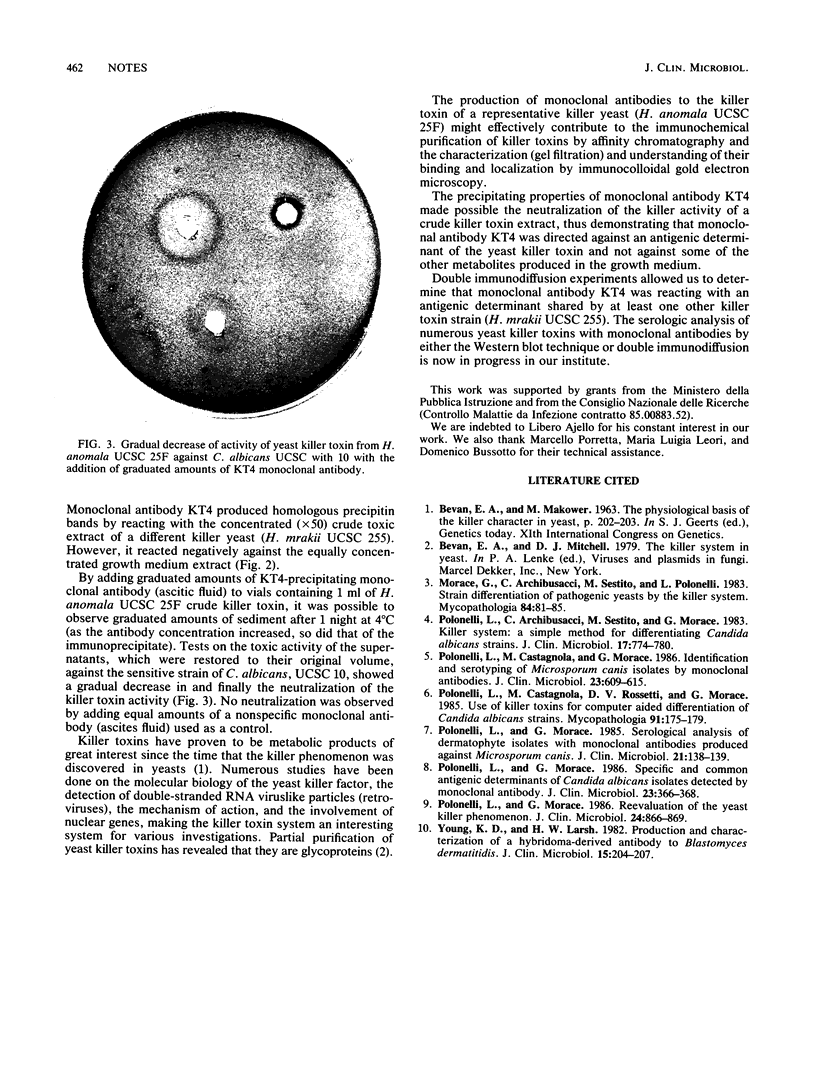
Images in this article
Selected References
These references are in PubMed. This may not be the complete list of references from this article.
- Morace G., Archibusacci C., Sestito M., Polonelli L. Strain differentiation of pathogenic yeasts by the killer system. Mycopathologia. 1984 Feb 15;84(2-3):81–85. doi: 10.1007/BF00436517. [DOI] [PubMed] [Google Scholar]
- Polonelli L., Archibusacci C., Sestito M., Morace G. Killer system: a simple method for differentiating Candida albicans strains. J Clin Microbiol. 1983 May;17(5):774–780. doi: 10.1128/jcm.17.5.774-780.1983. [DOI] [PMC free article] [PubMed] [Google Scholar]
- Polonelli L., Castagnola M., Morace G. Identification and serotyping of Microsporum canis isolates by monoclonal antibodies. J Clin Microbiol. 1986 Mar;23(3):609–615. doi: 10.1128/jcm.23.3.609-615.1986. [DOI] [PMC free article] [PubMed] [Google Scholar]
- Polonelli L., Castagnola M., Rossetti D. V., Morace G. Use of killer toxins for computer-aided differentiation of Candida albicans strains. Mycopathologia. 1985 Sep;91(3):175–179. doi: 10.1007/BF00446297. [DOI] [PubMed] [Google Scholar]
- Polonelli L., Morace G. Reevaluation of the yeast killer phenomenon. J Clin Microbiol. 1986 Nov;24(5):866–869. doi: 10.1128/jcm.24.5.866-869.1986. [DOI] [PMC free article] [PubMed] [Google Scholar]
- Polonelli L., Morace G. Serological analysis of dermatophyte isolates with monoclonal antibodies produced against Microsporum canis. J Clin Microbiol. 1985 Jan;21(1):138–139. doi: 10.1128/jcm.21.1.138-139.1985. [DOI] [PMC free article] [PubMed] [Google Scholar]
- Polonelli L., Morace G. Specific and common antigenic determinants of Candida albicans isolates detected by monoclonal antibody. J Clin Microbiol. 1986 Feb;23(2):366–368. doi: 10.1128/jcm.23.2.366-368.1986. [DOI] [PMC free article] [PubMed] [Google Scholar]
- Young K. D., Larsh H. W. Production and characterization of a hybridoma-derived antibody to Blastomyces dermatitidis. J Clin Microbiol. 1982 Feb;15(2):204–207. doi: 10.1128/jcm.15.2.204-207.1982. [DOI] [PMC free article] [PubMed] [Google Scholar]



